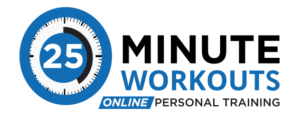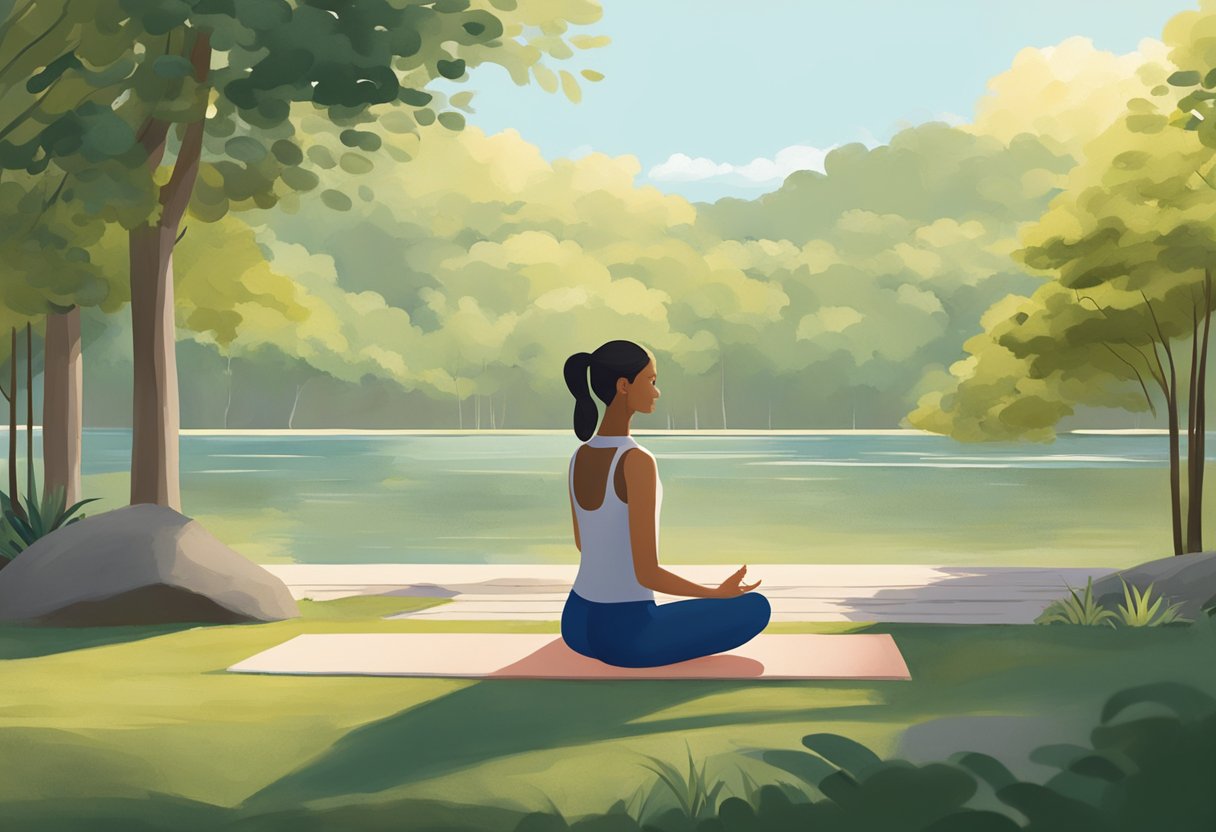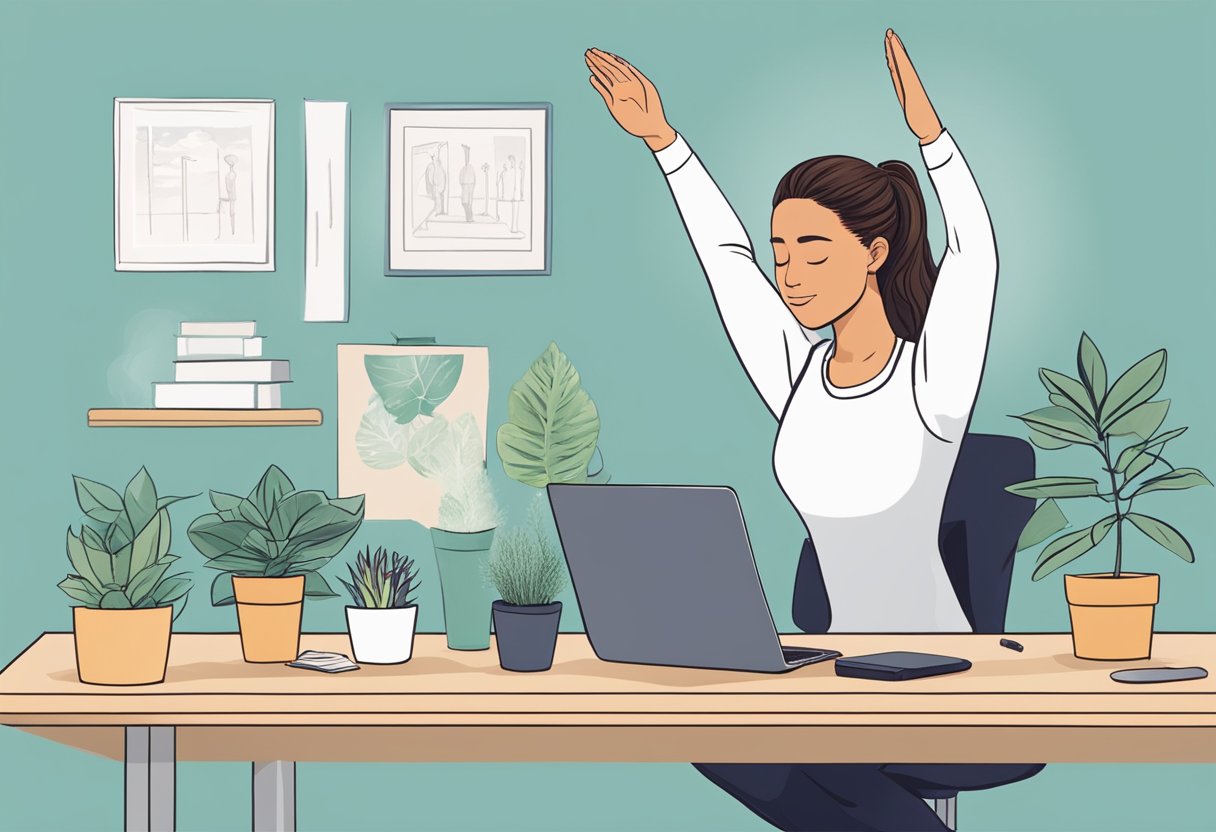Balancing a demanding work schedule and maintaining your well-being can be challenging. Stress often becomes a significant part of daily life for busy professionals.

You don’t need special equipment or a lot of time to integrate these exercises into your day. Whether you’re at your desk, in a meeting, or on the go, there are simple but effective techniques to manage stress.
Building a toolkit of such practices can support your mental and physical health efficiently.
Stress management is vital for staying productive and focused. Even small changes, like mindfulness exercises or strategic relaxation techniques, can make a big difference.
Popular Posts
- Massage Gun vs. Foam Roller: Which Recovery Tool Reigns Supreme?
- 27 Best Calisthenics Exercises for Full-Body Strength and Fitness
- 10 HIIT Workouts for Busy Professionals: Max Fitness, Min Time
- Good Posture Working from Home: Optimize Your Workspace to Prevent Discomfort and Health Issues
- The Best Crossfit Exercises for Full-Body Conditioning
Taking steps to reduce stress not only enhances your professional performance but also enriches your personal life.
Understanding Stress and Its Impact on Professionals

Stress is a common issue for many professionals, affecting both physical and mental health. It is crucial to understand how stress works and its potential impacts to manage it effectively.
The Science of Stress
Stress is a biological response to perceived threats or challenges. When you encounter a stressor, your body’s “fight or flight” mechanism gets activated.
This response increases the release of adrenaline and cortisol, hormones that prepare your body for immediate action.
While this can be helpful in short bursts, chronic stress keeps your mind and body in a constant state of tension. This prolonged activation can diminish your immune system, making you more susceptible to illnesses.
Understanding these processes helps in recognizing when you are overwhelmed and need to employ stress management techniques.
Effects of Stress on Body and Mind
The impacts of stress on your physical and mental well-being cannot be understated.
Physically, stress can lead to symptoms like headaches, muscle tension, and even cardiovascular problems. These symptoms make it challenging to maintain a healthy lifestyle, potentially leading to more serious health issues.
Mentally, stress contributes to conditions such as anxiety and depression. It can impair your cognitive functions, such as memory and concentration.
Understanding this allows you to take proactive measures, like engaging in physical activity or seeking social support, to combat these detrimental effects.
Integrating self-care practices, such as those found in stress management techniques, can help mitigate these impacts.
Quick Mindfulness Techniques for Anxiety Relief
Incorporating mindfulness into your daily routine can significantly reduce anxiety and improve your focus. Here are three effective techniques to help you stay calm and centered.
Focused Breathing Exercises
Focused breathing is a simple yet powerful way to anchor yourself in the present moment. By paying attention to your breath, you can calm your mind and alleviate anxiety.
Start by finding a quiet place where you can sit comfortably. Close your eyes and take a deep breath in through your nose, filling your lungs completely.
Hold the breath for a moment, then slowly exhale through your mouth.
Repeat this process for three to five minutes, focusing solely on the sensation of your breath entering and leaving your body. This exercise helps you to break the cycle of negative thoughts and brings immediate calmness.
Mindfulness Meditation
Mindfulness meditation involves sitting quietly and focusing your attention on the present moment.
To start, find a peaceful spot, sit down, and close your eyes.
Direct your attention to your breathing, noticing each inhale and exhale without trying to control it.
Let your thoughts flow as they come without judgment. If you find your mind wandering, gently bring your focus back to your breath.
This practice can be done in as little as ten minutes and allows you to gain a new perspective on stressful situations, reducing your anxiety levels over time.
Practicing Gratitude
Practicing gratitude involves regularly recognizing and appreciating the positive aspects of your life, which can significantly reduce anxiety.
Start or end your day by writing down at least three things you are grateful for. These can be anything from a warm cup of coffee to the support of a friend.
You can keep a gratitude journal or simply mentally list these items.
Focusing on what you have, rather than what you lack, shifts your attention from negative thoughts to positive ones.
This simple exercise can uplift your mood and provide a sense of calm, helping you cope better with stress and anxiety.
Physical Exercises to Combat Tension
Engaging in physical activities can significantly reduce stress levels, increase overall well-being, and combat tension effectively.
Specific exercises, such as yoga poses, mindful walking, and progressive muscle relaxation, offer various techniques to manage stress.
On-the-Spot Yoga Poses
You can practice simple yoga poses anywhere to alleviate stress and tension.
Mountain Pose (Tadasana) involves standing with feet together, arms at your sides, and focusing on your breath. This position helps you center yourself and reduce anxiety.
Seated Forward Bend (Paschimottanasana) is another efficient pose. While seated, stretch your legs in front of you and gently reach for your toes. This position can relieve lower back stress and promote relaxation.
Try the Child’s Pose (Balasana) by kneeling on the floor, sitting back on your heels, and stretching your arms forward. This pose is excellent for relieving neck and shoulder tension.
Walking Techniques to Clear Your Mind
Mindful walking not only provides physical exercise but also clears your mind and reduces stress.
Focus on your breath and the sensation of your feet touching the ground. This practice, often referred to as a walking meditation, can bring a sense of calm to your daily routine.
Incorporate paced breathing while walking. Breathe in for four steps, hold for four, and exhale for four.
This structured breathing pattern helps you to control anxiety and promotes relaxation.
You can also try power walking if time permits. This involves walking at a brisk pace, which boosts endorphin production and reduces stress.
Progressive Muscle Relaxation
Progressive muscle relaxation (PMR) is a powerful technique for reducing tension. It involves systematically tensing and then relaxing different muscle groups in the body.
You can start with your feet and work your way up to your head.
Begin by tensing your foot muscles for a few seconds, then release. Move to your calves, followed by your thighs, abdomen, chest, arms, neck, and face.
PMR helps to heighten your awareness of physical sensations and directly counteracts muscle tension caused by stress. Regular practice can make a significant difference in how you manage stress daily.
Developing a Daily Self-Care Routine
Creating a daily self-care routine can significantly reduce stress and improve your overall well-being. Here are practical ways to incorporate mindfulness exercises, manage your time effectively, and regulate your diet to support a less stressful lifestyle.
Incorporating Mindfulness Exercises
Mindfulness exercises are critical for stress reduction and can be easily integrated into your daily routine.
Start with deep breathing exercises, which can help you center your thoughts and reduce anxiety.
Set aside 5-10 minutes each day for meditation or guided imagery to clear your mind.
Progressive muscle relaxation can also be beneficial. This involves tensing and then gradually relaxing each muscle group.
This simple practice can be done at your desk or during a break.
Adding mindful walking, where you focus on your surroundings and your steps, can also offer moments of calm in a busy schedule.
These practices help you stay present and manage stress effectively.
Effective Time Management for Self-Care
Effective time management is crucial for incorporating self-care into a busy schedule.
Start by prioritizing your tasks. Use tools like to-do lists or time-blocking to allocate specific time slots for work, breaks, and self-care activities.
Delegating tasks can also free up more time for self-care. Assess your workload and determine what can be delegated to others.
Incorporating short, regular breaks into your schedule can prevent burnout and improve productivity.
Techniques like the Pomodoro Technique, which involves working for 25 minutes and then taking a 5-minute break, can be particularly effective.
The Role of Diet in Stress Reduction
Your diet plays a significant role in managing stress.
Begin by incorporating nutrient-dense foods such as fruits, vegetables, and whole grains into your meals. These foods provide essential vitamins and minerals that support mental health.
Stay hydrated by drinking plenty of water throughout the day.
Avoid excessive caffeine and sugar, which can contribute to anxiety and energy crashes.
Instead, opt for snacks rich in protein and healthy fats, like nuts and seeds, to maintain steady energy levels.
Regular, balanced meals can help stabilize your mood and keep stress levels in check.
Consider planning your meals ahead of time to ensure you have access to healthy options, even on the busiest days.
Enhancing Well-Being Through Social Support and Creativity
Utilizing social support and engaging in creative activities are essential strategies for enhancing well-being. These approaches can effectively reduce stress and boost emotional health.
Engaging in Team-Building Activities
Team-building activities are an excellent way to foster social support among colleagues. These activities enhance camaraderie and help build trust within a team.
Examples include problem-solving exercises, collaborative projects, and even casual social gatherings.
Such activities not only improve interpersonal relationships but also promote a sense of belonging and reduce feelings of isolation.
They provide an opportunity to understand and appreciate each other’s strengths and skills, which can be critical in a high-stress work environment.
Participating in team-building efforts helps in reducing work-related stress by creating a supportive network of peers. This, in turn, enhances overall well-being and emotional health.
Creative Outlets for Stress Relief
Engaging in creative activities can serve as an effective outlet for stress relief. Creative expression promotes cognitive, emotional, physical, and social well-being.
Activities like painting, writing, or playing musical instruments allow individuals to channel their emotions into a constructive medium.
Research has shown that creativity can positively impact mental health by providing a sense of accomplishment and purpose. It allows for personal reflection and emotional processing, which can be particularly beneficial during stressful times.
You can explore various creative outlets to find what resonates best with you.
Art classes, journaling, or even informal creative sessions with friends can be incredibly fulfilling and stress-relieving.
Engaging in these activities not only reduces stress but also offers a way to connect more deeply with yourself and others.
Leveraging Technology for Stress Management
Incorporating technology into your stress management routine can enhance relaxation and mindfulness practices. By utilizing various apps and sensory aids, you can efficiently integrate stress-relieving techniques into your daily life.
Here’s how you can make the most of tech tools to combat stress.
Relaxation Apps and Tools
Relaxation apps like Headspace, Calm, and Insight Timer offer guided meditations and mindfulness exercises that you can follow anytime, anywhere.
These apps are designed to help you practice mindfulness and relaxation techniques consistently. They include features such as:
- Guided Meditations: Aim to improve focus and reduce anxiety.
- Progress Tracking: Monitor your mindfulness journey and celebrate milestones.
- Sleep Aids: Specific audio tracks to help you relax and fall asleep faster.
Other useful tools include breathing apps like Breathe2Relax, which guide you through deep breathing exercises to promote relaxation and trigger the release of endorphins.
By using these apps regularly, you can build a robust routine that aids in managing stress effectively.
Sounds and Visual Aids for Relaxation
Listening to certain sounds can significantly aid in stress relief.
Apps like Noisli or Soundscapes provide a range of soothing background noises, from rain sounds to white noise, that can help you relax and focus.
Visual aids such as guided visualization videos on platforms like YouTube can also provide a break from the daily hustle.
Videos featuring tranquil nature scenes or calming visual effects can be used to enhance your mindfulness meditation sessions.
Combining these sounds and visualization techniques helps create a multi-sensory relaxation environment, aiding in stress relief and promoting a sense of calm amidst a busy schedule.
Sleep Strategies to Improve Quality and Reduce Anxiety
To enhance your sleep quality and manage anxiety, consider incorporating deep breathing exercises, optimizing your sleep environment, and utilizing apps like Insight Timer. These strategies can help you combat insomnia and racing thoughts effectively.
Deep Breathing for Better Sleep
Deep breathing exercises can significantly reduce anxiety and improve sleep quality.
Techniques such as the 4-7-8 method, where you inhale for 4 seconds, hold for 7, and exhale for 8, help calm your mind and body.
Another simple method involves placing your hand on your stomach, slowly inhaling, feeling your stomach rise, holding for a moment, and exhaling slowly.
Practicing these exercises regularly can help you fall asleep faster and stay asleep longer.
Incorporating deep breathing into your nightly routine can create a sense of peace and relaxation, making it easier to manage stress and anxiety before bed.
Optimizing Your Environment for Sleep
Your sleep environment plays a crucial role in sleep quality.
Ensure your bedroom is dark, quiet, and cool. Using blackout curtains and white noise machines can help eliminate disruptive sounds and light.
Keep electronic devices away from your bed to reduce blue light exposure, which can interfere with your sleep cycle.
Comfortable bedding and a supportive mattress are also important for restful sleep.
Consistency in your sleep schedule, such as going to bed and waking up at the same time every day, can help regulate your body’s internal clock.
This practice is particularly effective in reducing the symptoms of insomnia.
Apps like Insight Timer for Sleep Improvement
Using sleep-focused apps like Insight Timer can assist in managing anxiety and improving sleep quality.
Insight Timer offers a variety of guided meditations, sleep music, and breathing exercises designed to help you relax and prepare for sleep.
The app includes features that specifically address anxiety and racing thoughts, providing tools to calm your mind before bedtime.
With options for different lengths and styles of meditation, you can find what works best for you.
Incorporating these app-based strategies into your nightly routine can make a significant difference in both falling asleep and staying asleep, making it easier to manage anxiety and depression-related sleep disturbances.
Coping with Acute Stress and Unexpected Crises
Managing acute stress and dealing with unexpected crises are essential for maintaining productivity and mental health. By focusing on effective breathing techniques and seeking professional help, you can better navigate these challenging situations.
Breathing Techniques During High Stress
In moments of acute stress, breathing techniques can significantly help.
Techniques such as diaphragmatic breathing can calm your nervous system.
- Diaphragmatic Breathing: Place one hand on your chest and the other on your abdomen. Inhale deeply through your nose, expanding your abdomen, then exhale slowly through your nose.
- Box Breathing: Inhale for a count of four, hold your breath for four, exhale for four, and hold again for four.
These exercises are easy to implement and can quickly reduce stress levels, allowing you to regain focus and productivity.
Seeking Professional Help in Crises
During severe crises, professional guidance is indispensable.
Speaking with a psychologist or counselor specialized in stress management helps in understanding your triggers and developing coping mechanisms.
Cognitive-Behavioral Therapies (CBT) are effective for immediate stress relief and long-term management.
If stress continues to disrupt your daily function, immediate professional intervention can prevent further mental and physical health issues.
Utilizing these resources not only aids in coping with acute stress but also fosters a sense of self-compassion and resilience.
Remember, seeking help is a proactive step towards better mental health.
Frequently Asked Questions
This section addresses common questions regarding stress-relief strategies and exercises, providing practical tips and approaches for busy professionals at work and home.
What are quick stress-relief strategies for professionals in the workplace?
You can try deep breathing exercises or short meditation sessions at your desk.
Using a stress ball or practicing mindful stretching can also help.
These activities can be done in just a few minutes and can quickly lower stress levels.
Can you suggest simple exercises for stress reduction that can be done at home?
Consider practicing yoga or Pilates, both of which are known for their stress-relieving benefits.
A brisk walk or gentle jog can also be effective, offering a combination of physical activity and mental relaxation.
Additionally, gentle stretching or tai chi can be done in your living room.
What are some effective stress-relieving activities aimed specifically at adults?
Adult coloring books, guided imagery, or mindfulness exercises can help reduce stress.
Activities like gardening or cooking can also be incredibly soothing and provide a sense of accomplishment.
What is the best exercise to help reduce stress and anxiety?
Cardiovascular exercises like running, swimming, or cycling are highly effective.
These activities release endorphins, which are natural mood lifters. Weight training and resistance exercises are also beneficial, providing a structured way to channel your energy and reduce stress.
Could you list some stress management techniques that are easy to implement for busy individuals?
Effective techniques include time management strategies, setting priorities, and maintaining a healthy work-life balance.
Incorporating regular physical exercise and establishing a support network can significantly reduce stress.
Self-care practices like proper sleep, a balanced diet, and relaxation can also help.
Which stress-relief methods are most beneficial for women with hectic schedules?
Mindfulness exercises and quick yoga routines can be particularly beneficial.
Women may also find relief through social activities and support networks, which can offer emotional and practical support.
Balancing work and personal life with structured planning can further alleviate stress.








